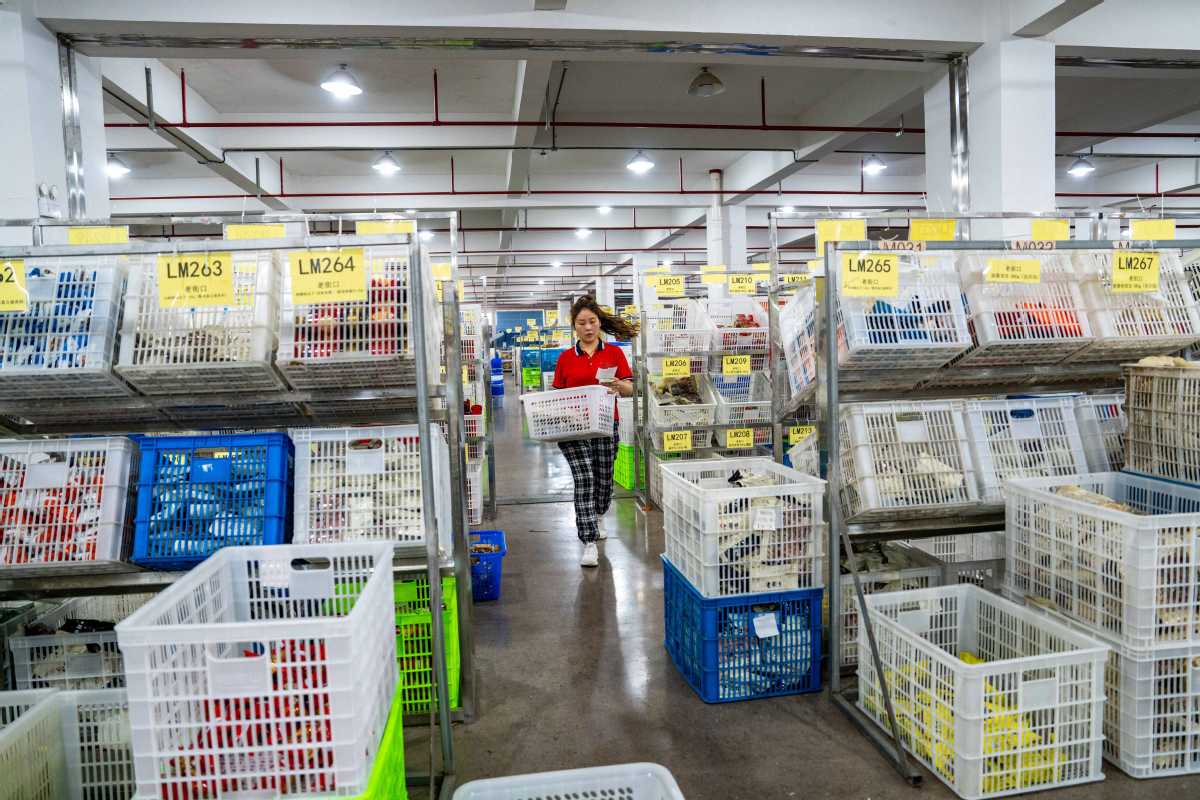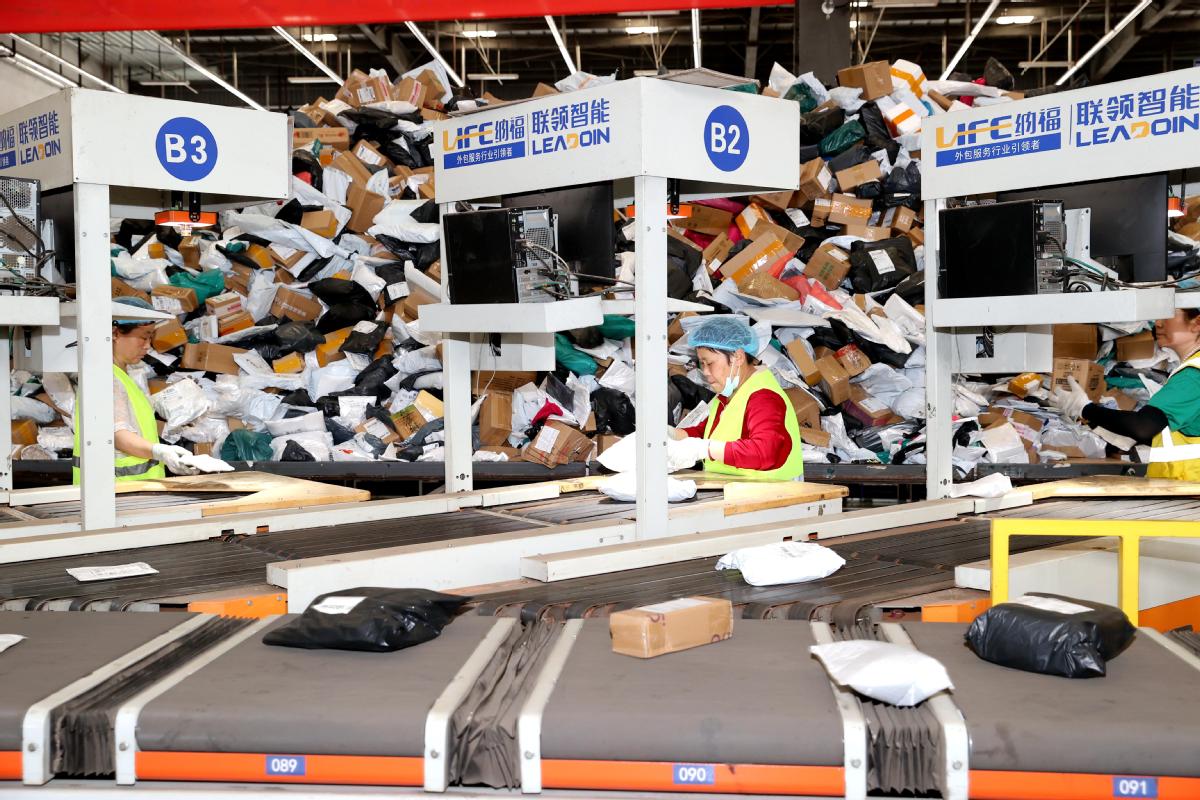Shopping
618 shopping gala stimulates consumption

An employee arranges orders placed during this year’s June 18 shopping carnival at a food company in Jinhua, Zhejiang province, on June 15. YANG MEIQING/FOR CHINA DAILY
The enthusiasm of Chinese consumers has been evident during this year’s June 18 shopping carnival, as major e-commerce platforms ramped up efforts to provide steep discounts and shopping subsidies as well as simplify promotional methods to attract price-conscious shoppers and bolster sales.
Industry experts said the midyear promotional campaign has played a vital role in stimulating people’s purchasing appetites, promoting the recovery of consumption and shoring up the economy, with electronic devices containing innovative technologies and domestic brands proving popular among consumers.
As Chinese shoppers have become more rational about potential purchases, online retailers have adopted a more pragmatic and simpler approach by canceling presale campaigns this year, with a key focus on cost-effective products and the use of livestreaming to further unleash the immense potential of consumption, they added.
Data from e-commerce giant JD, which initiated the midyear promotional event, showed that more than 10,000 brands saw their sales surge over fivefold in the first four hours of the June 18 shopping carnival, which kicked off at 8 pm on May 31.
Sales of AI-powered computers, smartphones and learning devices via JD’s online marketplaces soared 260 percent year-on-year in the first hour of the promotional gala, while the transaction volume of foldable screen phones, smartwatches and organic light-emitting diode (OLED) displays, skyrocketed over 100 percent year-on-year in short bursts of time, JD said.
The turnover of new products from more than 700 home appliance brands increased over 100 percent year-on-year in the first four hours, JD said. More than 2,500 clothing brands and 300 beauty brands witnessed their sales grow over 100 percent compared with the same period last year.
In addition, the number of viewers of JD’s promotional livestreaming sessions skyrocketed 460 percent year-on-year with orders from sessions hosted by JD’s professional procurement and sales teams up 300 percent compared with last year’s Singles’ Day shopping festival.
The company has launched a subsidy campaign worth 10 billion yuan ($1.38 billion) during the June 18 shopping spree, offering a variety of low-priced products.
Data from Tmall, Alibaba’s business-to-customer platform, showed that sales of 59 brands surpassed 100 million yuan within the first four hours of its midyear promotional event, which started at 8 pm on May 20.
Turnover of Apple’s products on Tmall exceeded 1.5 billion yuan within the first hour, while sales of domestic smartphone brands such as Huawei, Xiaomi and Vivo surpassed 100 million yuan during the period, Tmall said.
Moreover, the transaction volume of 11 cosmetics and skin care brands as well as 23 household appliance brands — including Haier, Hisense and Xiaomi — crossed the 100 million yuan threshold in the first four hours. Sales of luxury brands, such as Valentino and Miu Miu, exceeded that of the entire day last year within the first hour of the gala, it added.
Outdoor sporting goods, consumer electronic products, nutrition and healthcare items and household appliances witnessed robust growth during the shopping extravaganza that now spans about one month.
Jason Yu, general manager of Kantar Worldpanel China, a market research provider, said, “Price is a very basic and core competitiveness for e-commerce platforms as consumers could purchase premium products with high cost-effectiveness during the promotional event, which will satisfy their demand for consumption upgrade.”
Yu said some brands are paying more attention to improving consumer experience, as well as providing various discounts and membership services, striking a balance between chasing commercial interests and optimizing user experience.

Workers sort packages at a logistics center in Suqian, Jiangsu province, on June 14. WANG LI/FOR CHINA DAILY
It is noteworthy that an increasing number of brands are moving toward starting their own normalized livestreaming sessions, reducing over-dependence on top livestreamers and nurturing new anchors, Yu said.
Furthermore, he added that domestic brands have stepped up investments in technological innovation, research and development while improving the quality of products to cater to demand from value-conscious consumers.
“Consumption has become the main driving force boosting China’s economic growth, and the June 18 shopping festival is pivotal to unleashing consumers’ purchasing potential and promoting the recovery of the economy,” said Wang Yun, a researcher at the Academy of Macroeconomic Research, which is affiliated with the National Development and Reform Commission, the country’s top economic regulator.
Wang said that domestic brands are increasingly gaining popularity among Chinese consumers, especially the post-90s and post-00s generations, who have a growing sense of national pride and confidence in Chinese culture.
China’s consumer market has witnessed a sustained recovery. Retail sales, a significant indicator of consumption strength, grew 4.1 percent year-on-year in the first five months, said the National Bureau of Statistics. Online retail sales jumped 12.4 percent year-on-year during the January-May period.
The country has rolled out a raft of measures to spur the consumption of products and services such as automobiles, electronics, housing and home decor amid its broader push to boost momentum and stabilize the economy.
More efforts should be made to stabilize and expand employment, improve household incomes, boost people’s ability and willingness to spend and propel the country’s economic growth, said Pan Helin, a member of the Ministry of Industry and Information Technology’s Expert Committee for Information and Communication Economy.
Industry insiders said chasing high gross merchandise volume, or GMV, is no longer the focus of the June 18 shopping carnival, while consumers are increasingly looking for cost-effective local alternatives as Chinese brands’ product quality and safety improve.
They added that Chinese consumer enthusiasm for the online shopping festival will not wane, but what e-commerce platforms should do is to improve supply chains, and optimize business and operational models in accordance with shoppers’ buying habits and preferences.
Mo Daiqing, a senior analyst at the Internet Economy Institute, a domestic consultancy, said it is of great significance for e-commerce platforms to adopt low-price strategies and offer cost-effective commodities, so as to attract a new breed of users and rev up sales.
Noting that Chinese consumers are more rational now and carefully review their needs, with an emphasis on quality and product value, Mo said online retailers have made promotional methods simpler this time, with direct price cuts being a preferred strategy, which is conducive to improving user loyalty and repurchase rates.
Moreover, both JD and Tmall are facing intensified competition from video-sharing and livestreaming platforms, including Douyin and Kuaishou, which are betting big on e-commerce in livestreaming formats, Mo added.
“Major Chinese e-commerce platforms have canceled presales for this year’s June 18 shopping extravaganza, simplifying the online shopping process and optimizing consumer shopping experiences and services,” said Dong Puyu, a researcher at CIO Manage, a Beijing-based digital economy market consultancy.
Dong said simplified promotional events and direct price cuts will help promote the healthy development of e-commerce and better protect the rights and interests of consumers over the long term.
However, the move may lead to intensified competition among e-commerce players and merchants need to adopt new sales strategies and adjust their inventory management models, he added.
Zhao Ping, deputy head of the Beijing-based Academy of China Council for the Promotion of International Trade, said China’s consumer market is expected to see a recovery of growth this year. He called for efforts to further cut taxes and fees for micro, small and medium-sized enterprises, expand employment and increase household disposable incomes to further perk up consumption.
(Web editor: Wu Chaolan, Liang Jun)










